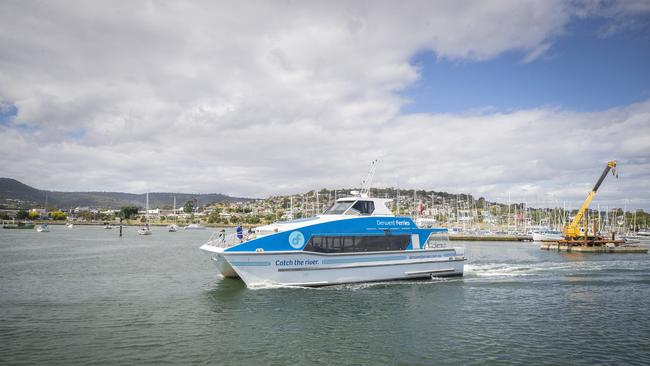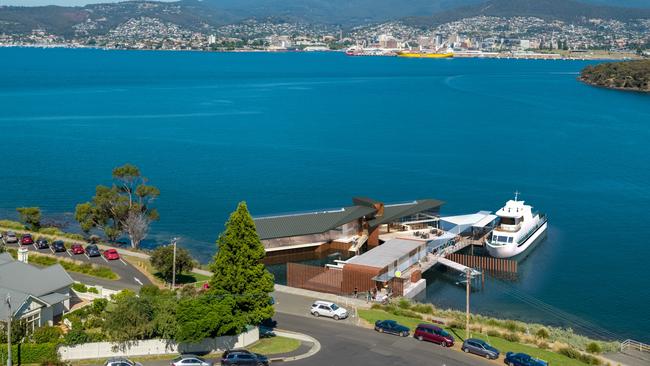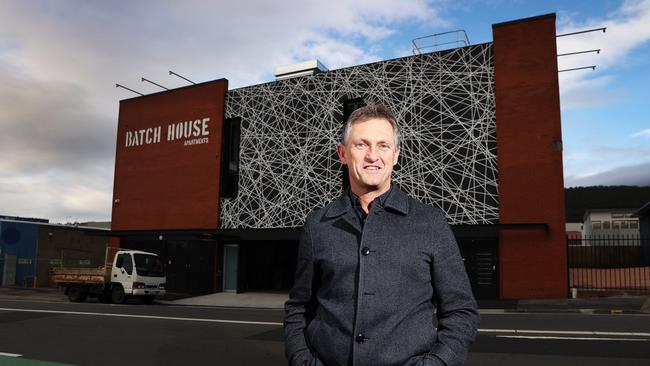Architect Mark Drury unveils ‘Jetty Project’, his vision for new, expanded Derwent Ferry terminals
An award-winning architect has outlined a bold vision for new ferry terminals under the expanded Derwent Ferry service, saying they would be a major drawcard for the community and encourage active transport.

Tasmania
Don't miss out on the headlines from Tasmania. Followed categories will be added to My News.
An award-winning Hobart architect has unveiled a bold vision for new ferry terminals on the Derwent River, proposing that they include over-the-water saunas, kiosks or cafes, allied health services, and saltwater therapy facilities.
Mark Drury, who designed the Batch House Apartments on Argyle St, as well as a number of impressive homes at Sandy Bay, Taroona, and Tolmans Hill, has urged the Tasmanian government to “recognise it’s at a crossroads of deciding between a basic ‘ferry stop’ or an expanded infrastructure model that invests in our communities’ health and wellbeing”.
It comes as the government prepares to expand the popular Derwent Ferry service, which has been running between Bellerive and the Hobart waterfront since 2021. There are plans to build new terminals at Regatta Point, Sandy Bay, Wilkinsons Point, Howrah Point, Lindisfarne, and Kingston Beach.

A draft River Derwent Ferry Service Masterplan is out for consultation, with the public feedback period set to close on Monday, January 8.
In a Talking Point in today’s Mercury, Mr Drury writes: ‘We can and should do much better than offer a ‘bus stop’ on the water”.
“If the state government is already committing to spending millions of dollars on infrastructure, shouldn’t it consider the cost-benefits of increasing this spend to deliver a facility that will have far greater benefits to the community, and encourage more of the community to utilise the ferry service,” he said.
Mr Drury has presented his idea of the ‘Jetty Project’, which he describes as an “ideal synergy” between a ferry stop and a facility that “draws the community to the foreshore” and boasts “income-generating” potential.
“The concept involves creating a ferry terminal as an over-the-water, fully accessible community asset that encourages community interaction and recreation, which in turn improves connection, social interaction, health, and wellbeing,” he said.
Mr Drury’s terminals would include paddle craft launching capabilities, docking and storage, meeting and training hire spaces, a showcase for art, accessible public toilets, showers, a saltwater therapy facility, an over-the-water sauna, kiosk or cafe, relaxation areas, bike storage and charging, and allied health services.

“The inclusion of such facilities means there are potential income-generating opportunities, which will help to pay for costs like insurance, maintenance, power, and a site manager,” he said.
“The income could be derived by leasing paddle craft spots to businesses or private owners, leasing the kiosk/cafe, sauna, and allied health rooms to various operators, and hiring out of meeting and training hire spaces to businesses for activities that relate to community, mental health and wellbeing or recreation.”
A five-stage planning study has been undertaken to inform the draft masterplan for the expanded ferry services. Key elements of the draft plan include improving “commuter connectivity” to Hobart and the Eastern Shore, as well as off-peak and events services.





